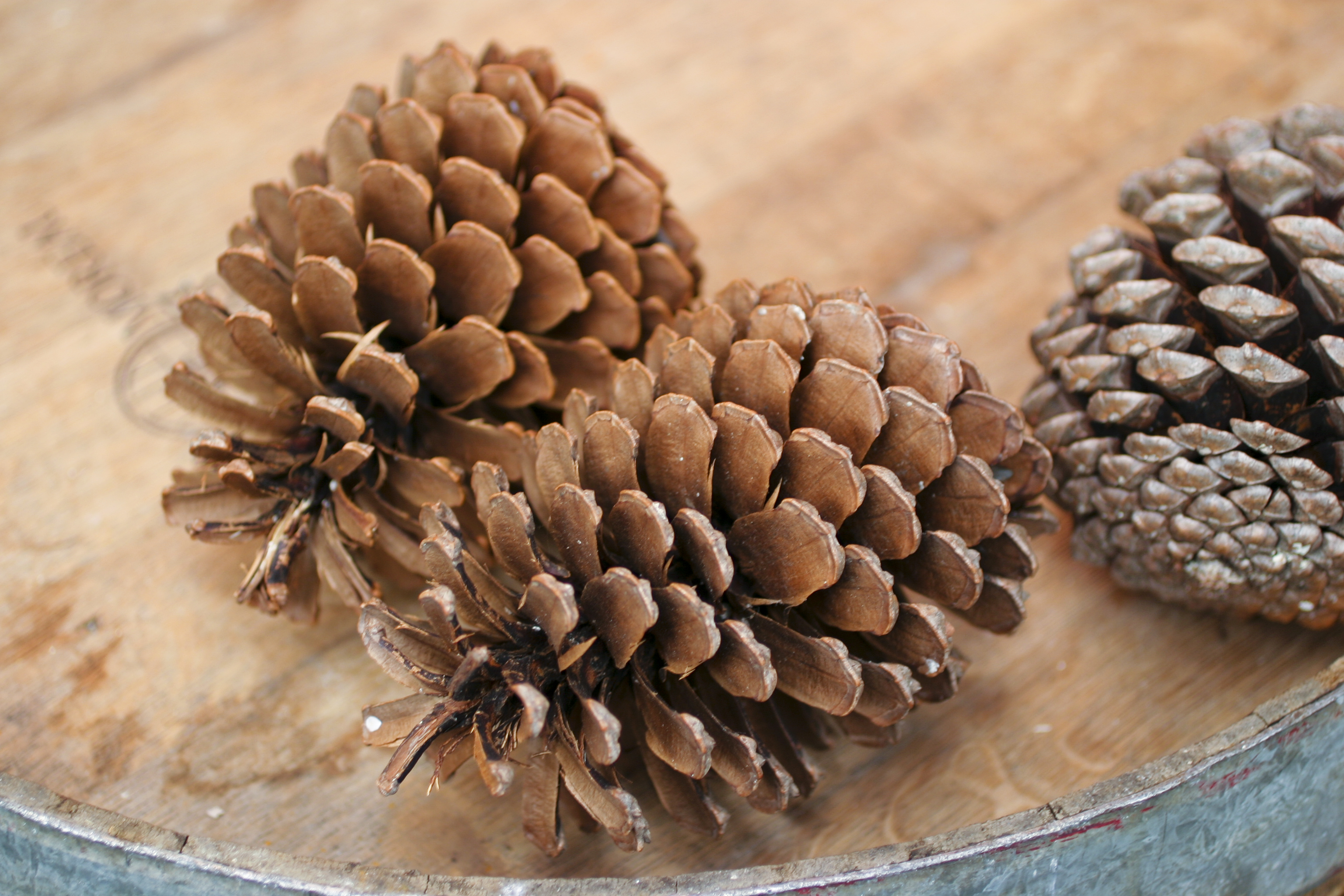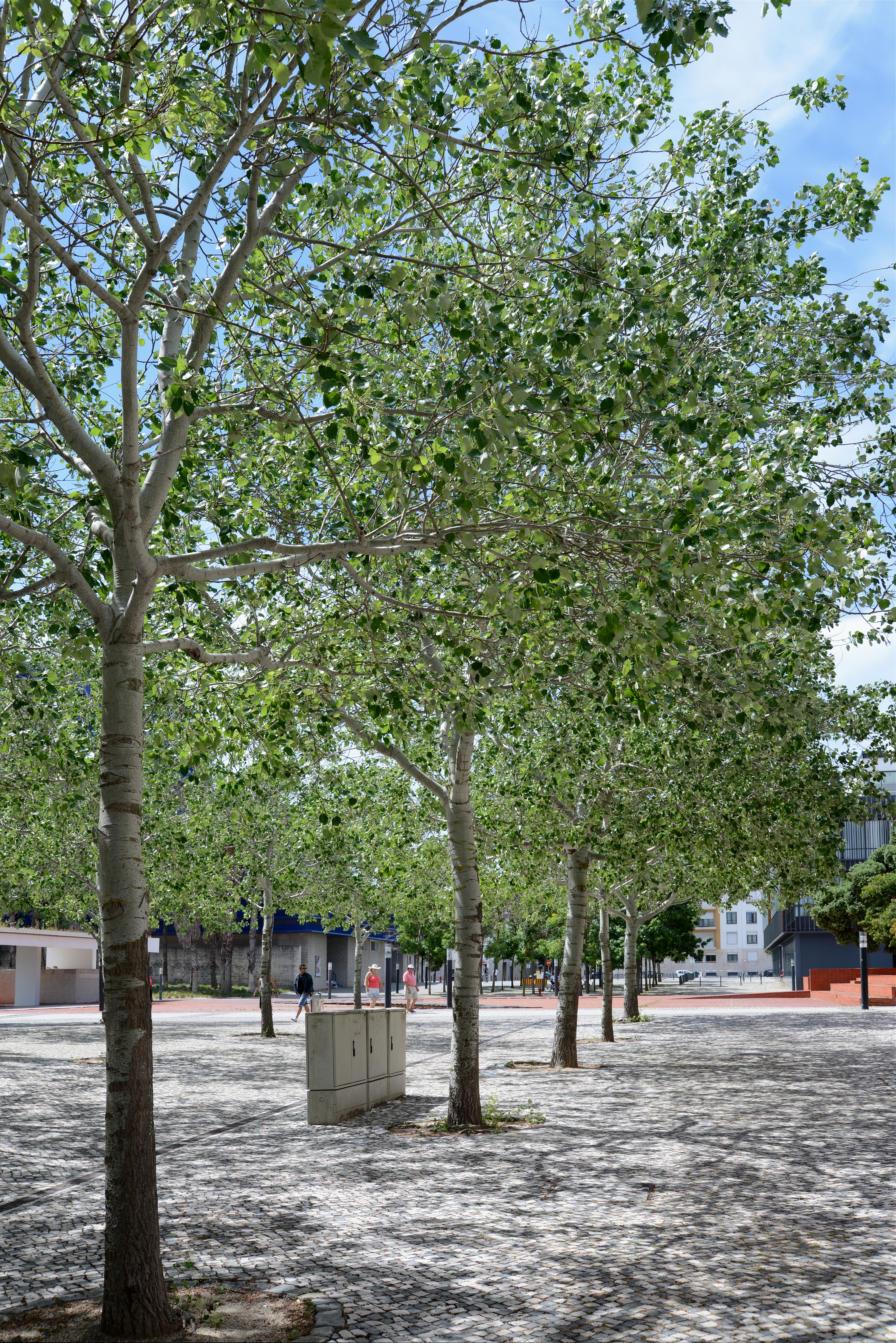|
Arboretum La Alfaguara
The Arboretum La Alfaguara was formerly a tree nursery in the Sierra de la Alfaguara, in Alfacar near Granada in Spain. It contains samples of many of the trees that are scattered throughout the Sierra and the surrounding mountain ranges. The whole Sierra has been classified as the " Parque Natural Sierra de Huétor". Next to the Arboretum is an entertainment area aimed at schoolchildren in the province of Granada and in Andalusia as a whole. The Arboretum and entertainment area are administered by the Ministry of Environment of the Junta de Andalucía. The Arboretum lies on the GR-3103 road about from the town of Granada, and about from Alfacar. A forest trail starting from Fuente Grande also leads into the Sierra de Huétor. History For most of the last century the Arboretum was a nursery that supplied mainly coniferous plants for the reforestation of the entire Sierra de Huétor, which had had its original vegetation completely destroyed by over-exploitation for forestr ... [...More Info...] [...Related Items...] OR: [Wikipedia] [Google] [Baidu] |
Ulmus Minor
''Ulmus minor'' Mill., the field elm, is by far the most polymorphic of the European species, although its taxonomy remains a matter of contention. Its natural range is predominantly south European, extending to Asia Minor and Iran; its northern outposts are the Baltic islands of Öland and Gotland, although it may have been introduced by humans. The tree's typical habitat is low-lying forest along the main rivers, growing in association with oak and ash, where it tolerates summer floods as well as droughts.Heybroek, H. M., Goudzwaard, L, Kaljee, H. (2009). ''Iep of olm, karakterboom van de Lage Landen'' (:Elm, a tree with character of the Low Countries). KNNV, Uitgeverij. Current treatment of the species owes much to Richens, who noted (1983) that several varieties of field elm are distinguishable on the European mainland. Of these, he listed the small-leaved ''U. minor'' of France and Spain; the narrow-leaved ''U. minor'' of northern and central Italy; the densely hairy lea ... [...More Info...] [...Related Items...] OR: [Wikipedia] [Google] [Baidu] |
Pinus Sylvestris
''Pinus sylvestris'', the Scots pine (UK), Scotch pine (US) or Baltic pine, is a species of tree in the pine family Pinaceae that is native to Eurasia. It can readily be identified by its combination of fairly short, blue-green leaves and orange-red bark. Description ''Pinus sylvestris'' is an evergreen coniferous tree growing up to in height and in trunk diameter when mature, exceptionally over tall and in trunk diameter on very productive sites. The tallest on record is a tree over 210 years old tree growing in Estonia which stands at . The lifespan is normally 150–300 years, with the oldest recorded specimens in Lapland, Northern Finland over 760 years. The bark is thick, flaky and orange-red when young to scaly and gray-brown in maturity, sometimes retaining the former on the upper portion.Trees for LifeSpecies profile: Scots pine/ref> The habit of the mature tree is distinctive due to its long, bare and straight trunk topped by a rounded or flat-topped mass of ... [...More Info...] [...Related Items...] OR: [Wikipedia] [Google] [Baidu] |
Pinus Nigra
''Pinus nigra'', the Austrian pine or black pine, is a moderately variable species of pine, occurring across Southern Europe from the Iberian Peninsula to the eastern Mediterranean, on the Anatolian peninsula of Turkey, Corsica and Cyprus, as well as Crimea and in the high mountains of Northwest Africa. Description ''Pinus nigra'' is a large coniferous evergreen tree, growing to high at maturity and spreading to wide. The bark is gray to yellow-brown, and is widely split by flaking fissures into scaly plates, becoming increasingly fissured with age. The leaves ('needles') are thinner and more flexible in western populations. The ovulate and pollen cones appear from May to June. The mature seed cones are (rarely to 11 cm) long, with rounded scales; they ripen from green to pale gray-buff or yellow-buff in September to November, about 18 months after pollination. The seeds are dark gray, long, with a yellow-buff wing long; they are wind-dispersed when the cones open from ... [...More Info...] [...Related Items...] OR: [Wikipedia] [Google] [Baidu] |
Pinus Ponderosa
''Pinus ponderosa'', commonly known as the ponderosa pine, bull pine, blackjack pine, western yellow-pine, or filipinus pine is a very large pine tree species of variable habitat native to mountainous regions of western North America. It is the most widely distributed pine species in North America.Safford, H.D. 2013. Natural Range of Variation (NRV) for yellow pine and mixed conifer forests in the bioregional assessment area, including the Sierra Nevada, southern Cascades, and Modoc and Inyo National Forests. Unpublished report. USDA Forest Service, Pacific Southwest Region, Vallejo, CA/ref> ''Pinus ponderosa'' grows in various erect forms from British Columbia southward and eastward through 16 western U.S. states and has been successfully introduced in temperate regions of Europe, and in New Zealand. It was first documented in modern science in 1826 in eastern Washington near present-day Spokane (of which it is the official city tree). On that occasion, David Douglas miside ... [...More Info...] [...Related Items...] OR: [Wikipedia] [Google] [Baidu] |
Pinus Pinaster
''Pinus pinaster'', the maritime pine or cluster pine, is a pine native to the south Atlantic Europe region and parts of the western Mediterranean. It is a hard, fast growing pine bearing small seeds with large wings. Description ''Pinus pinaster'' is a medium-size tree, reaching tall with a trunk diameter of up to , exceptionally . The bark is orange-red, thick, and deeply fissured at the base of the trunk, somewhat thinner in the upper crown. The leaves ('needles') are in pairs, very stout ( broad), up to long, and bluish-green to distinctly yellowish-green. The maritime pine features the longest and most robust needles of all European pine species. The cones are conic, long and broad at the base when closed, green at first, ripening glossy red-brown when 24 months old. They open slowly over the next few years, or after being heated by a forest fire, to release the seeds, opening to broad. The seeds are long, with a wing, and are wind- dispersed. Similar specie ... [...More Info...] [...Related Items...] OR: [Wikipedia] [Google] [Baidu] |
Cedrus Atlantica
''Cedrus atlantica'', the Atlas cedar, is a species of tree in the pine family Pinaceae, native to the Rif and Atlas Mountains of Morocco ( Middle Atlas, High Atlas), and to the Tell Atlas in Algeria.Gaussen, H. (1964). Genre ''Cedrus''. Les Formes Actuelles. ''Trav. Lab. For. Toulouse'' T2 V1 11: 295-320 A majority of the modern sourcesFarjon, A. (1990). ''Pinaceae. Drawings and Descriptions of the Genera''. Koeltz Scientific Books .Farjon, A. (2008). ''A Natural History of Conifers''. Timber Press . treat it as a distinct species ''Cedrus atlantica'', but some sources consider it a subspecies of Lebanon cedar (''C. libani'' subsp. ''atlantica''). Description Fully grown, Atlas cedar is a large coniferous evergreen tree, (rarely 40 m) tall, with a trunk diameter of . It is very similar in all characters to the other varieties of Lebanon cedar; differences are hard to discern. The mean cone size tends to be somewhat smaller (although recorded to 12 cm, only ra ... [...More Info...] [...Related Items...] OR: [Wikipedia] [Google] [Baidu] |
Salix Alba
''Salix alba'', the white willow, is a species of willow native to Europe and western and central Asia.Meikle, R. D. (1984). ''Willows and Poplars of Great Britain and Ireland''. BSBI Handbook No. 4. .Rushforth, K. (1999). ''Trees of Britain and Europe''. Collins . The name derives from the white tone to the undersides of the leaves. It is a medium-sized to large deciduous tree growing up to 10–30 m tall, with a trunk up to 1 m diameter and an irregular, often-leaning crown. The bark is grey-brown, and deeply fissured in older trees. The shoots in the typical species are grey-brown to green-brown. The leaves are paler than most other willows, due to a covering of very fine, silky white hairs, in particular on the underside; they are 5–10 cm long and 0.5–1.5 cm wide. The flowers are produced in catkins in early spring, and pollinated by insects. It is dioecious, with male and female catkins on separate trees; the male catkins are 4–5 cm long, ... [...More Info...] [...Related Items...] OR: [Wikipedia] [Google] [Baidu] |
Populus X Canadensis
''Populus'' is a genus of 25–30 species of deciduous flowering plants in the family Salicaceae, native to most of the Northern Hemisphere. English names variously applied to different species include poplar (), aspen, and cottonwood. The western balsam poplar ('' P. trichocarpa'') was the first tree to have its full DNA code determined by DNA sequencing, in 2006. Description The genus has a large genetic diversity, and can grow from tall, with trunks up to in diameter. The bark on young trees is smooth, white to greenish or dark gray, and often has conspicuous lenticels; on old trees, it remains smooth in some species, but becomes rough and deeply fissured in others. The shoots are stout, with (unlike in the related willows) the terminal bud present. The leaves are spirally arranged, and vary in shape from triangular to circular or (rarely) lobed, and with a long petiole; in species in the sections ''Populus'' and ''Aigeiros'', the petioles are laterally flattened, so ... [...More Info...] [...Related Items...] OR: [Wikipedia] [Google] [Baidu] |
Populus Alba
''Populus alba'', commonly called silver poplar,Webb, C. J.; Sykes, W. R.; Garnock-Jones, P. J. 1988: Flora of New Zealand. Vol. IV. Naturalised Pteridophytes, Gymnosperms, Dicotyledons. 4. Christchurch, New Zealand, Botany Division, D.S.I.R. silverleaf poplar, or white poplar, is a species of poplar, most closely related to the aspens (''Populus'' sect. ''Populus''). It is native to Morocco and then Portugal through central Europe (north to Germany and Poland) to central Asia. It grows in moist sites, often by watersides, in regions with hot summers and cold to mild winters.Flora Europaea''Populus alba''/ref>Rushforth, K. (1999). ''Trees of Britain and Europe''. Collins . Description It is a medium-sized deciduous tree, growing to heights of up to (rarely more), with a trunk up to in diameter and a broad, rounded crown. The bark is smooth and greenish-white to greyish-white with characteristic diamond-shaped dark marks on young trees, becoming blackish and fissured at the b ... [...More Info...] [...Related Items...] OR: [Wikipedia] [Google] [Baidu] |
Populus Nigra
''Populus nigra'', the black poplar, is a species of cottonwood poplar, the type species of section ''Aigeiros'' of the genus ''Populus'', native to Europe, southwest and central Asia, and northwest Africa.Flora Europaea''Populus nigra''/ref> Description Black poplars are medium- to large-sized deciduous trees, reaching 20–30 m, and rarely 40 m tall. Their leaves are diamond-shaped to triangular, 5–8 cm long and 6–8 cm broad, and green on both surfaces.Rushforth, K. (1999). ''Trees of Britain and Europe''. Collins. . Normally, their trunks achieve up to 1.5 m in diameter, but some unusual individual trees in France have grown old enough to have much larger trunks – more than 3 metres DBH (Diameter at Breast Height). The species is dioecious (male and female flowers are on different plants), with flowers in catkins and pollination achieved by the wind. The black poplar grows in low-lying areas of moist ground. Like most other pioneer species, the ... [...More Info...] [...Related Items...] OR: [Wikipedia] [Google] [Baidu] |







